Humpback Whales: Just Flukes
People who go out in boats to watch whales want to see whales. And they don’t, of course, want to see whales just cruising placidly along. They want to see whales “do something.” People generally understand that whether they get to see whales “do something” is a matter of luck or perhaps circumstances, such as prey availability, weather, temperature, current, and so on. And most people realize that sometimes no whales at all will appear.
Every voyage to see whales begins with a mix of fervent optimism and realistic pessimism as the tour boat loads and leaves the dock. Maybe the whales will breach. Maybe they will even engage in bubble-net feeding. Or maybe they will just cruise along, and won't do "anything." Or maybe they will be somewhere else.
Regardless of expectations, everyone, experienced viewers and novices alike, gets excited when the first whale is spotted and it arches and rolls and dives promisingly and its flukes magically appear. No matter how distant, how low-energy, how meager, every early display of flukes provokes excitement, comment, and countless smartphone shots and videos. And even if nothing else happens on a trip, viewers will have enjoyed seeing flukes. In the best displays, they will see flukes breaking the surface both gracefully and powerfully, water sheeting from the flukes and streaming from the trailing edges of both lobes, the flukes themselves elegant and seemingly smaller that they really are (they can be up to 18 feet across), in profile at their highest point appearing almost as delicate as wings. And viewers can assess and appreciate the immense strength of the whale's caudal peduncle (the whale's tailstock) as the whale’s back and tailstock arc strongly and then pull the flukes back down, beneath the surface.
Some high-resolution photos help show what momentary - and excited - observation might miss when a humpback's flukes appear and then disappear.
The tailstock of this humpback arcs and pulls the flukes up in a graceful but powerful curve. The flukes flatten and then are drawn down. The wake from the tailstock shows the whale is still moving forward even as its flukes are pulled vertically downward.
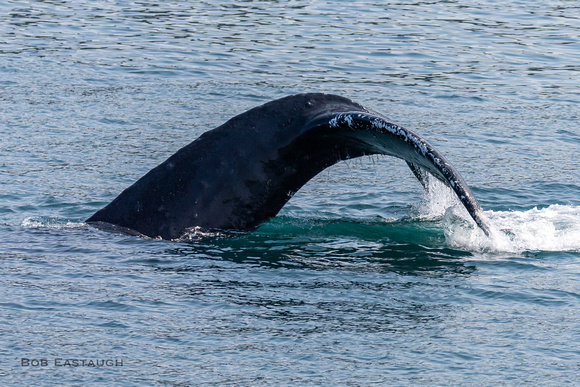 0M0A8846
0M0A8846
 0M0A8850
0M0A8850
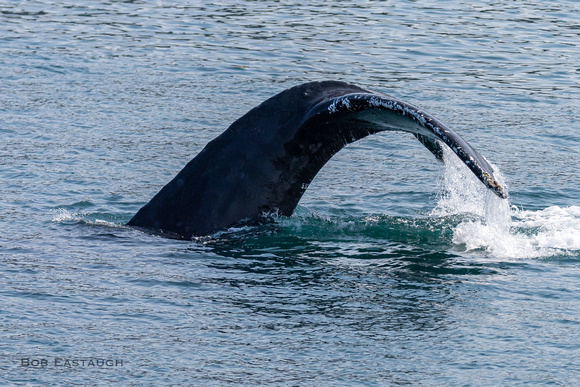 0M0A8852
0M0A8852
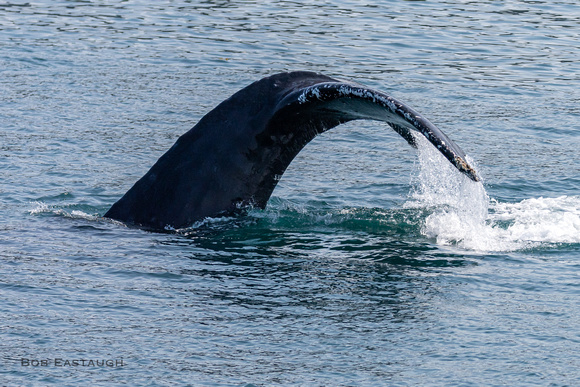 0M0A8853
0M0A8853
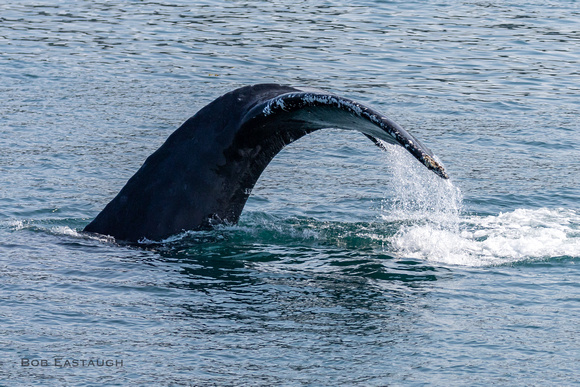 0M0A8855
0M0A8855
 0M0A8857
0M0A8857
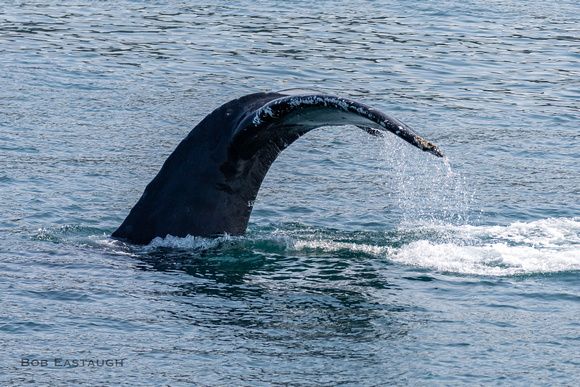 0M0A8860
0M0A8860
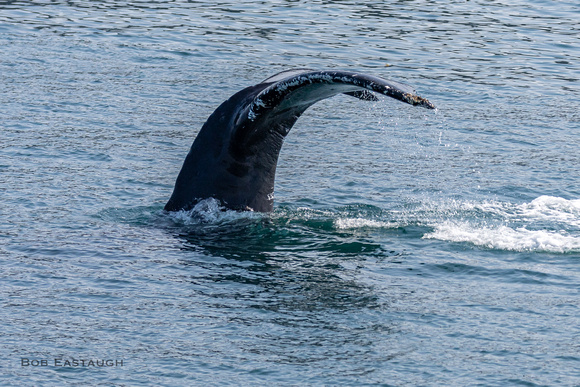 0M0A8869
0M0A8869
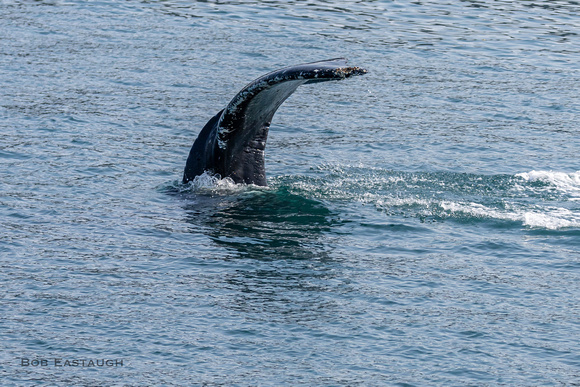 0M0A8882
0M0A8882
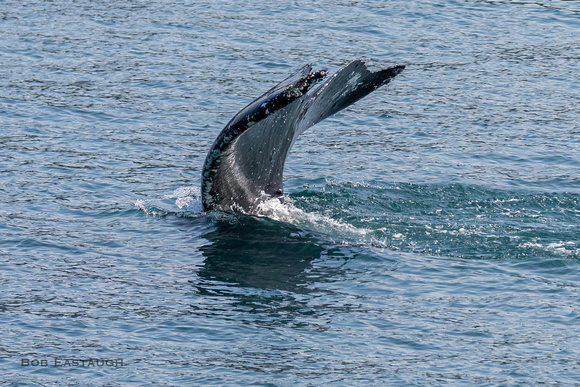 0M0A8894
0M0A8894
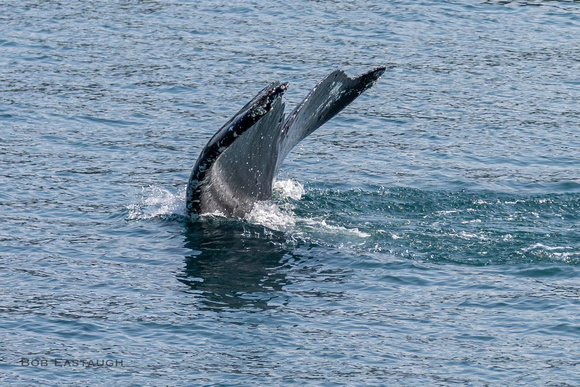 0M0A8897
0M0A8897
 0M0A8894
0M0A8894
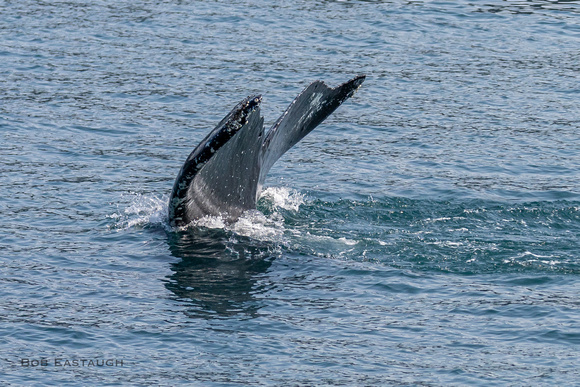 0M0A8898
0M0A8898
This sequence catches the water sluicing from the flukes, streaming most densely from the tips.
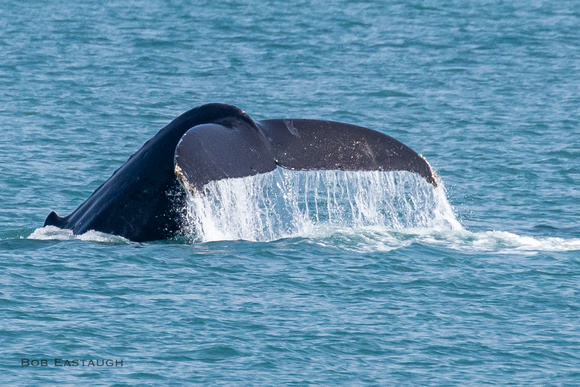 0M0A9213
0M0A9213
 0M0A9215
0M0A9215
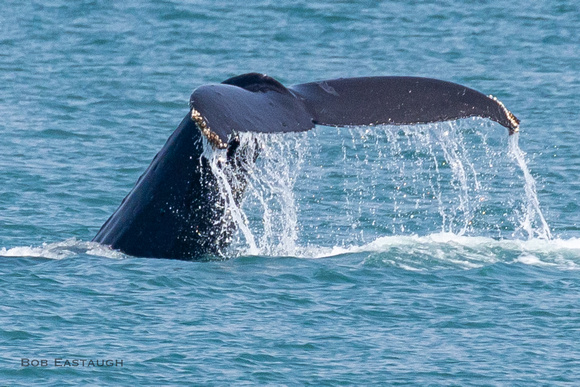 0M0A9218
0M0A9218
 0M0A9222
0M0A9222
 0M0A9226
0M0A9226
 0M0A9255
0M0A9255
The power of the caudal peduncle is on display here.
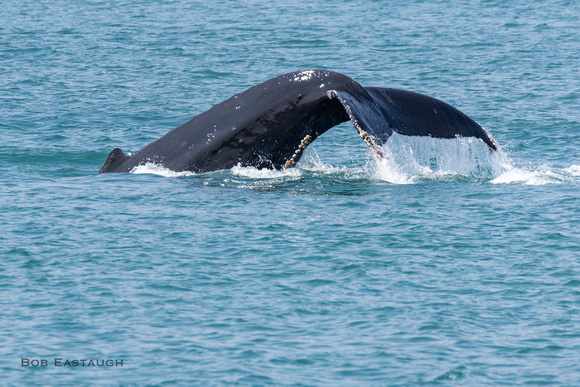 0M0A9797
0M0A9797
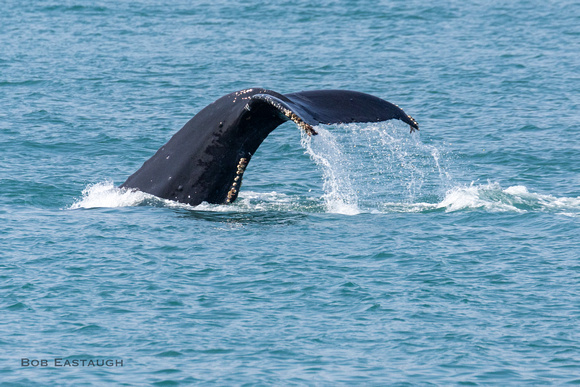 0M0A9799
0M0A9799
 0M0A9801
0M0A9801
 0M0A9805
0M0A9805
This display seems less dynamic, more of a quick flip. But as the flukes became more vertical and better illuminated, there seems to be an injured patch in the flesh on the left side of the whale's tailstock, most visible in the sixth image, a re-processed enlargement of the fifth. Like most adults, it has barnacles on its flukes, but there also seems to be seaweed on the tip of its left lobe.
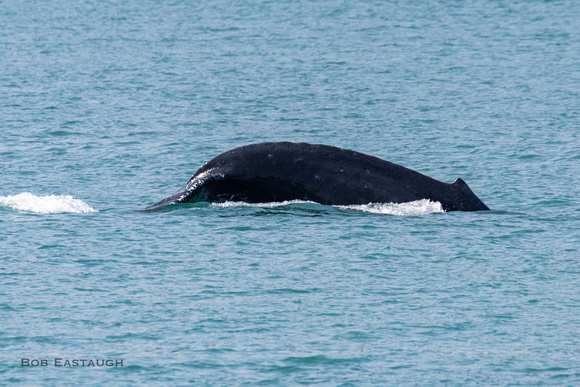 0M0A9851
0M0A9851
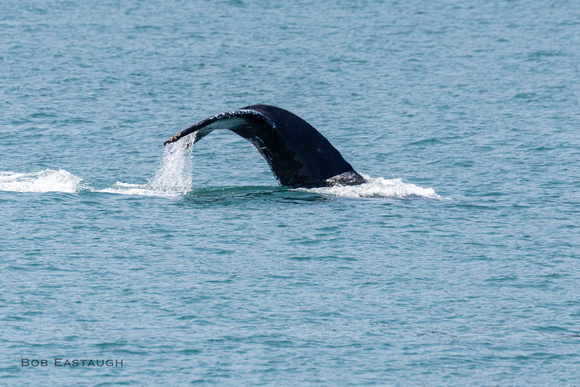 0M0A9852
0M0A9852
 0M0A9853
0M0A9853
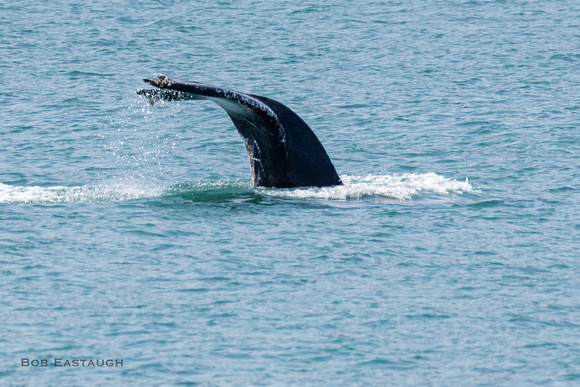 0M0A9856
0M0A9856
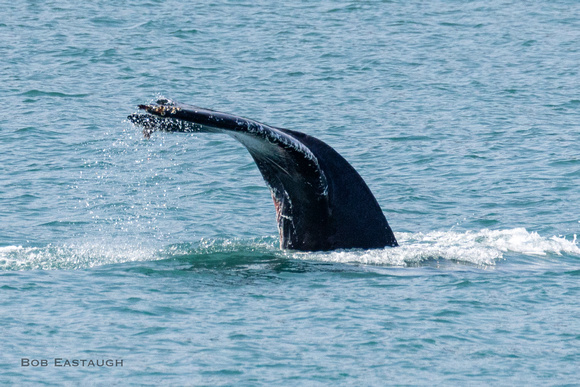 0M0A9857
0M0A9857
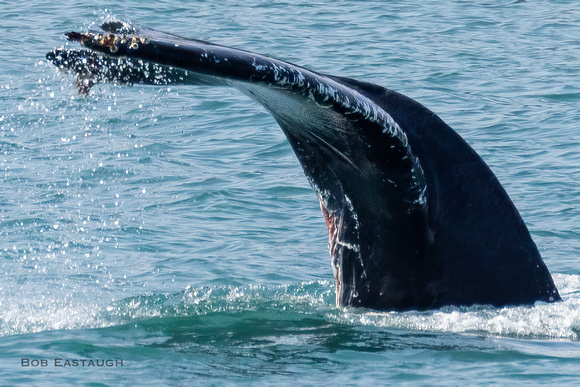 untitled-98570M0A9857
untitled-98570M0A9857
 0M0A9858
0M0A9858
Here is a final series, in case anyone wants to see even more fluke photos. The underside markings of the flukes for each whale in this post are distinctive, and one of the ways individual humpbacks are identified.
 0M0A0164
0M0A0164
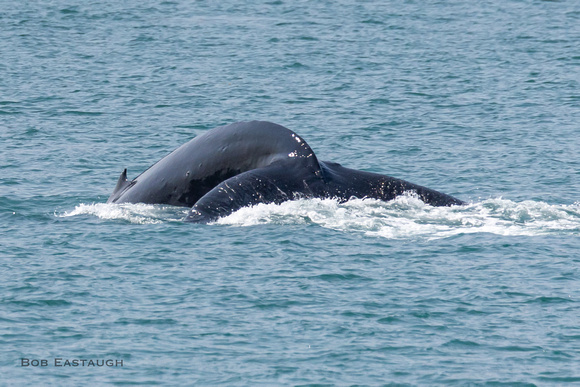 0M0A0167
0M0A0167
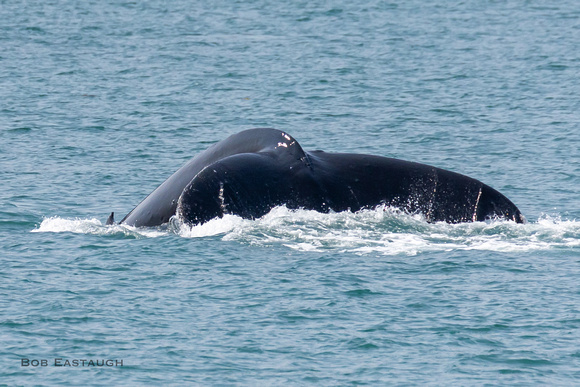 0M0A0173
0M0A0173
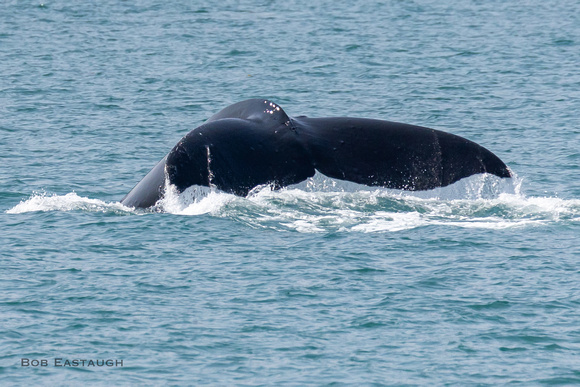 0M0A0176
0M0A0176
 0M0A0178
0M0A0178
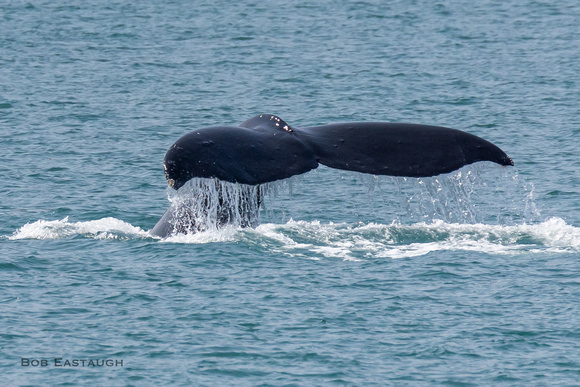 0M0A0182
0M0A0182
 0M0A0184
0M0A0184
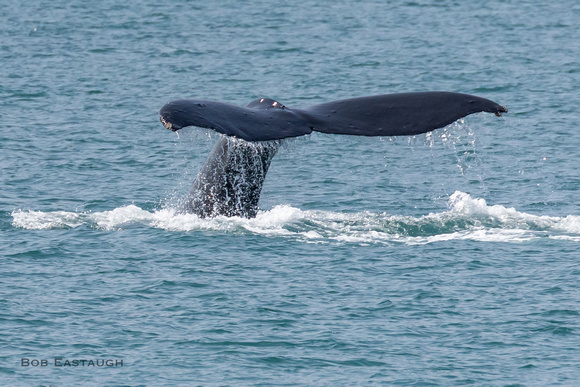 0M0A0187
0M0A0187
 0M0A0191
0M0A0191
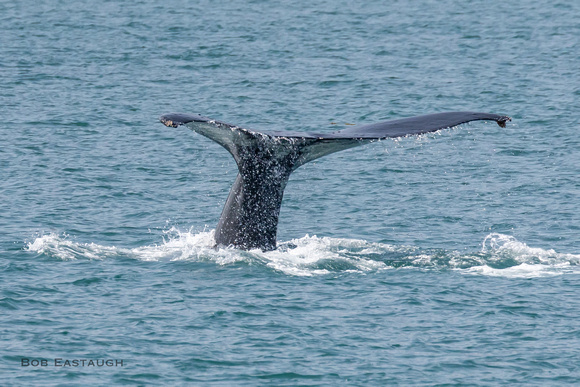 0M0A0193
0M0A0193
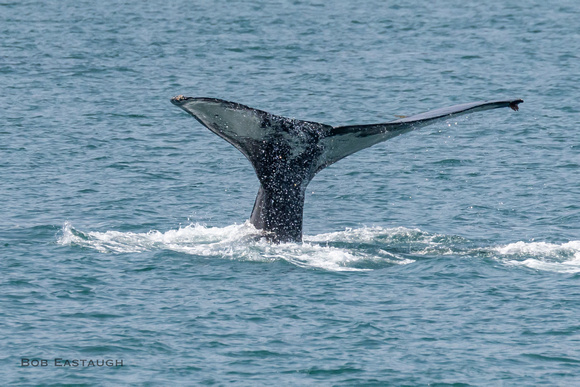 0M0A0198
0M0A0198
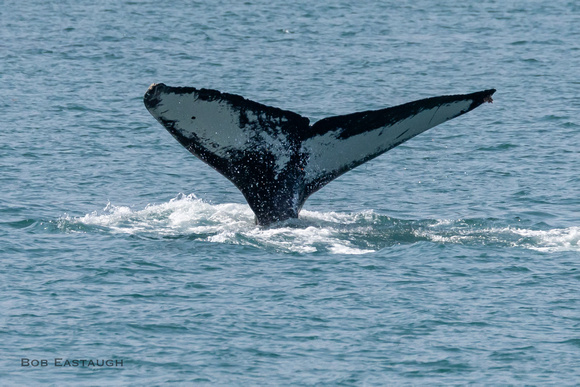 0M0A0207
0M0A0207
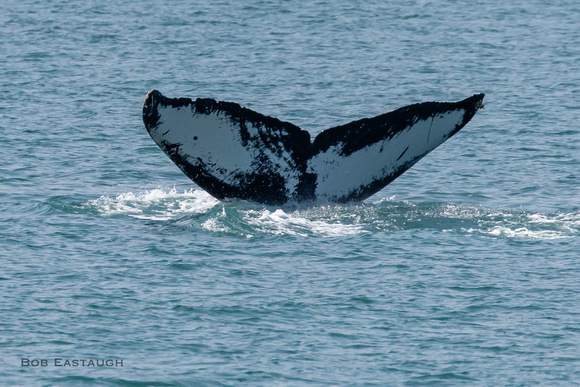 0M0A0215
0M0A0215
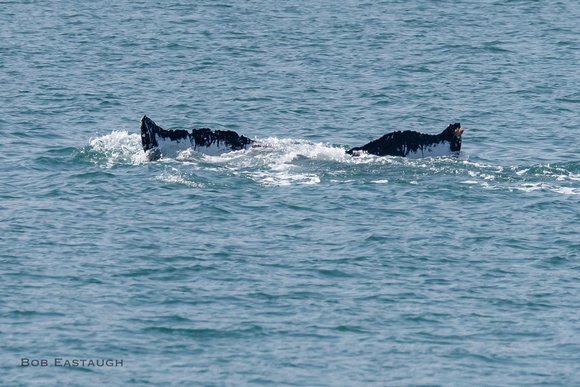 0M0A0227
0M0A0227
Comments
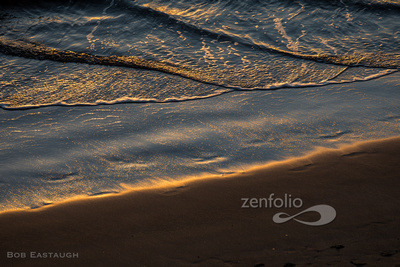

After a lifetime of mainly expressing myself with words, my postings here will mainly rely on images. They will speak for themselves to some extent, but I'll usually add a few comments of explanation. I've taken photographs for decades, since the 1950's, inspired in part by my father's photographic skill. Four years of photo assignments and quality darkroom time eventually gave way to decades of casual and family picture-taking. I re-immersed myself when I left film and turned to digital.